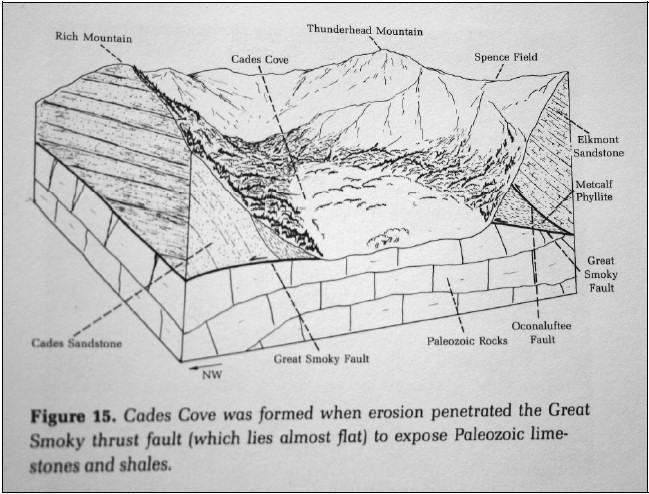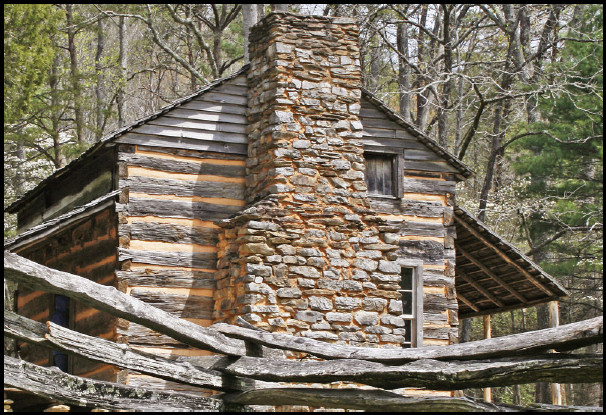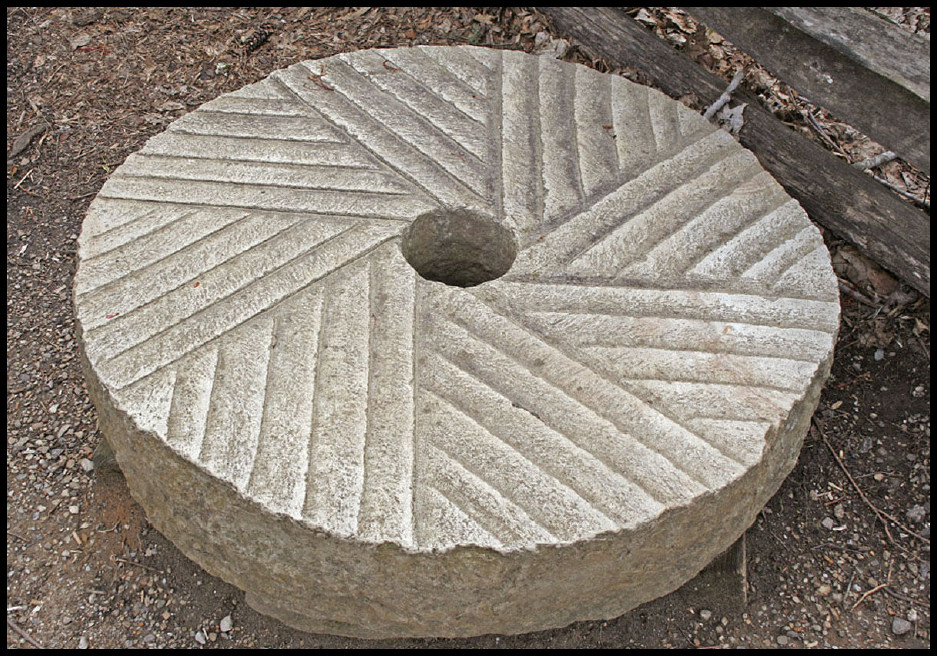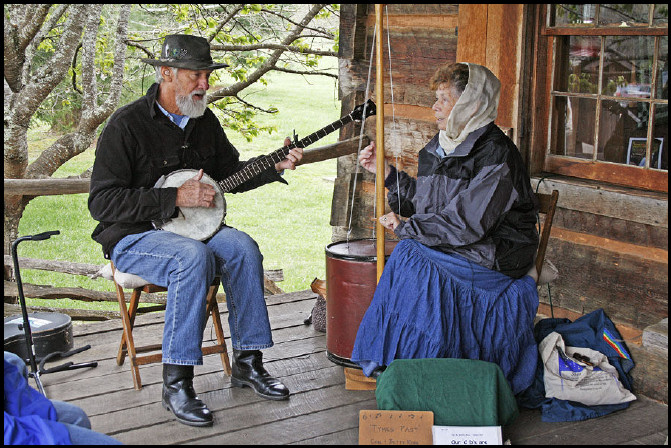We were fortunate to discover that our holiday coincided with the annual Great Smoky Mountain Spring Wildflower Pilgrimage. Folk travel from all over the States and Canada to see the bewildering array of wild flowers, so colourful and prolific in the Park in the Spring. Over 150 walks are arranged led by knowledgeable rangers, botanists, ecologists etc. I searched the programme for a geology walk and found only one that even mentioned the word, so I booked to join it. At the start of the walk the leader, in typical American fashion, asked us all to introduce ourselves, where we were from and what our interests were. I mentioned my interest in the geology and was hoping to learn something about it from the leader. After a while examining numerous trees, plants, flowers etc we came across an anomalous pile of rocks. The leader said "Well, Fred, what can you tell us about the geology then?" With a manageable piece of rock in hand, I spoke authoritatively about mountain building, metamorphism and schists, which they seemed to find interesting and satisfied their immediate curiosity.
Later I discovered that the anomalous pile of rocks was the fireplace/chimney of a long-since removed settler's log-cabin. When the Park was taken over by the State the settlers were forced to move out; they took the timbers but left behind the heavy stone parts - the chimney and fireplace. |
|
Of course, the early settlers needed to grind their wheat for flour so the areas' streams have many relict water mills of all conceivable designs. Naturally there was demand for grinding stones; they were either granite or sandstone. We came across the taper-grooved one on display shown in the photo. I couldn't help recalling the passion former MGA President, the late Tony Browne, had for the history, evolution and demise of millstones, especially those of Millstone Grit. He would have loved it here, as would anyone interested in geology, wildflowers and the history of the early settlers. |





